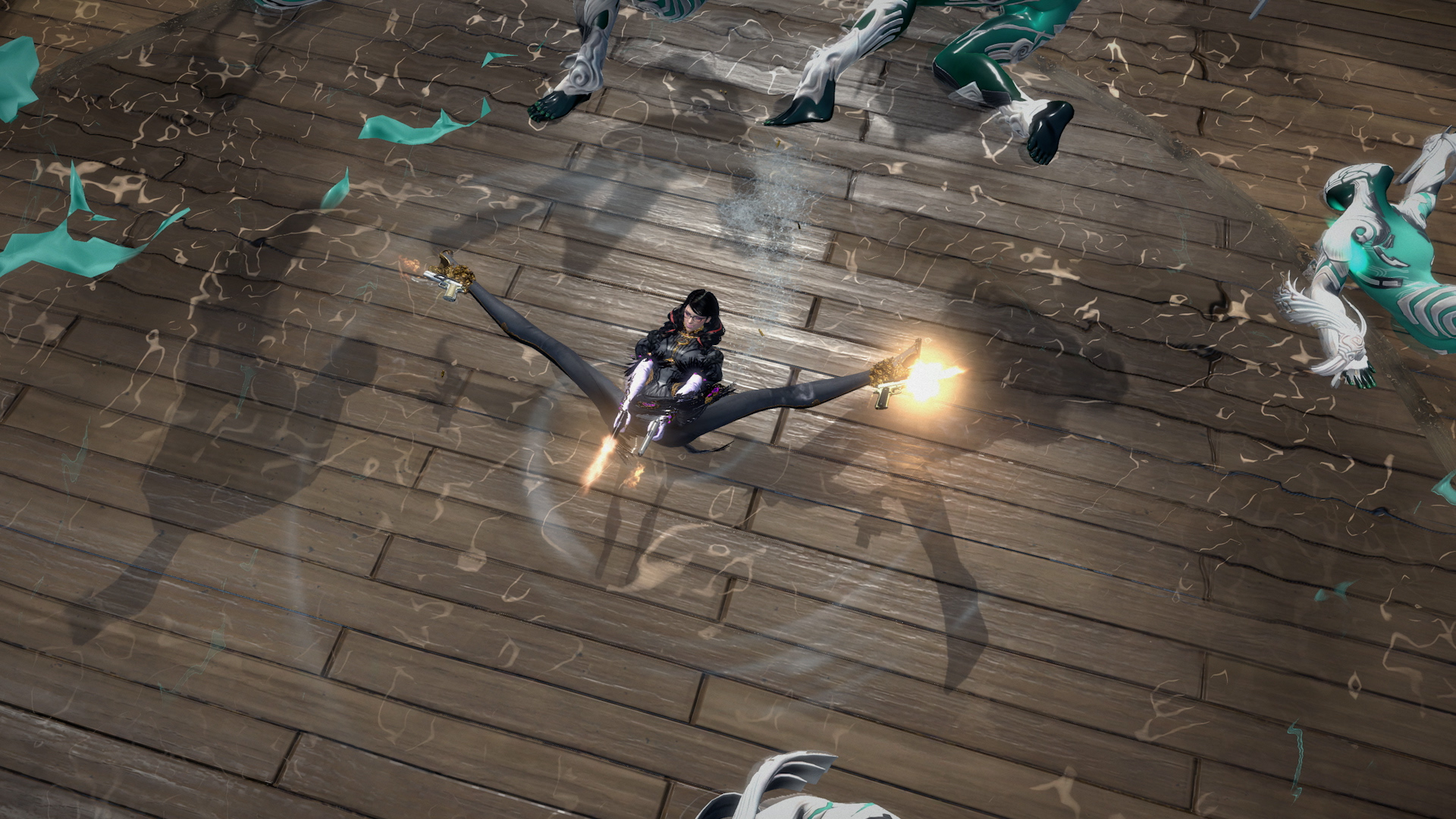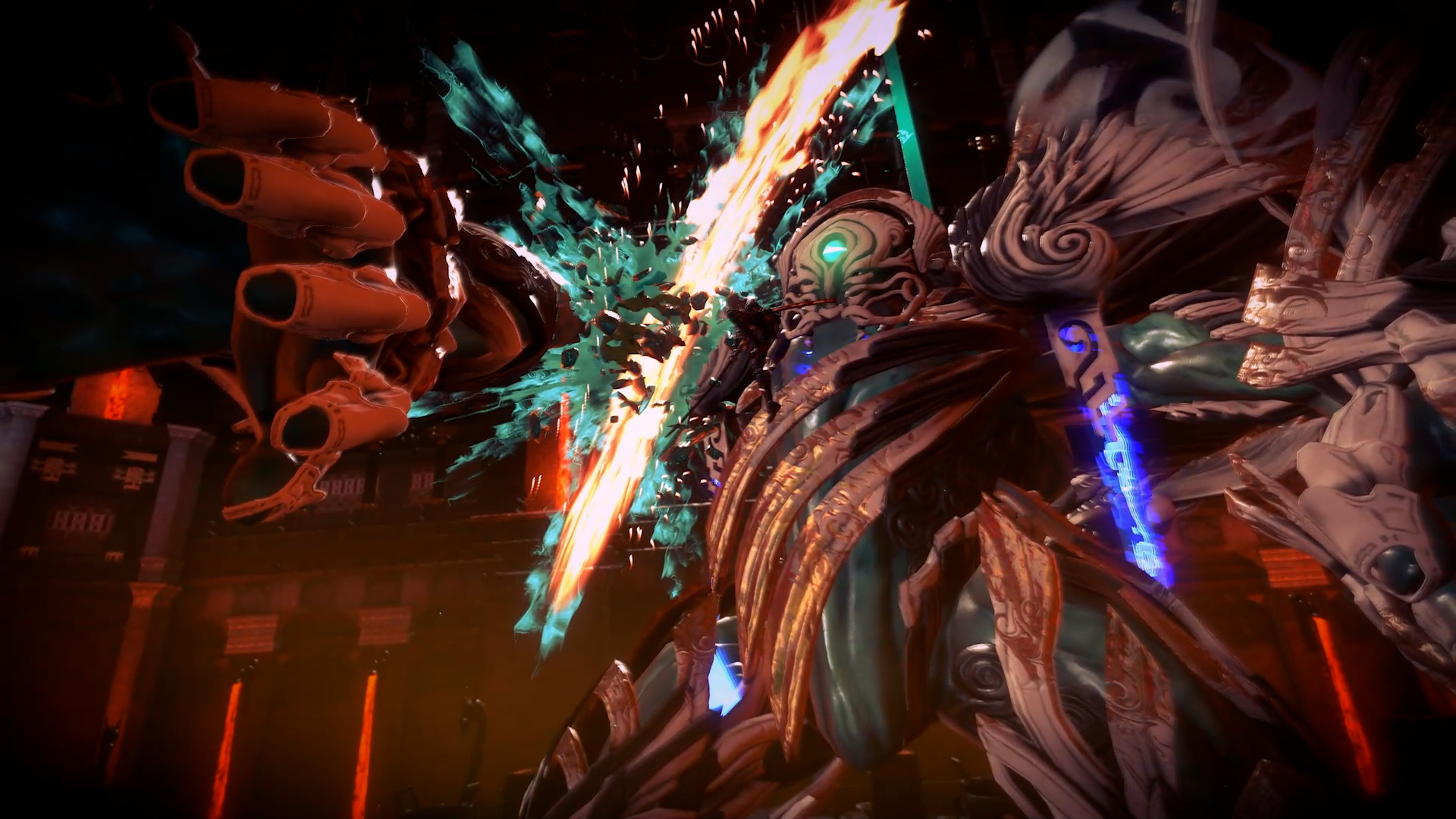Yeah, the witches, the witches, the witches are back, stone-cold sinners, as Bette Middler sang in the movie Hocus Pocus 2. And luckily, Bayonetta is back from the development death as well. So, after an absence of four years, Bayonetta makes her way back to our hearts and tv screens. Luckily Platinum found something to make the game playable with your parents or children in the room without explaining it’s all about fighting demons! Yes, I’m playing Bayonetta for its gameplay; trust me!
Bayonetta 3 is the third franchise installment and could have been part of the MCU’s Multiverse arc since it focuses on multiverses and Singularity. But, instead, Dr. Bayonetta is back and has to fight an army of homunculus with the power and ideals of Thanos (or Kang, for that matter). But before we dive into the Multiverse of Madness, let’s talk about Bayonetta a bit more for those unfamiliar with the Umbran Witch next door.
Bayonetta’s Extended Universe
Bayonetta 3, like its predecessors, is a hack-and-slash action game in which players control the eponymous protagonist Bayonetta as she combats various enemies using a combination of melee attacks and gunplay. Dodging enemy attacks at the last second triggers a state known as “Witch Time,” during which time and enemies slow down, allowing Bayonetta to continually attack them without interruption or traverse in real-time to solve environmental puzzles. To better understand what makes Bayonetta 3 unique, I’ll do a quick rundown of the other two games.
Bayonetta 1 takes place in Vigrid, a fictional city in Europe. She’s a witch who shapeshifts and uses various firearms, along with magical attacks she performs with her hair by summoning demons to dispatch her foes. She awakens after a 500-year sleep and finds herself in an unfamiliar area with no memories of who or what she is. Over time, she begins to remember what caused her current predicament. Five hundred years before the incident that caused Bayonetta’s memory loss, two factions were preserving the balance between darkness and light in the world: the Umbra Witches, who are followers of darkness, and their counterparts, the Lumen Sages, who are followers of light. The factions shared two distinct treasures, the ‘Eyes of the World’ (separately named the ‘Left Eye’ and the ‘Right Eye’), which they used to oversee the passage of time. Both factions mysteriously disappeared from Vigrid under unknown circumstances. Bayonetta has an ornate piece of jewelry that contains a small red gem and believes this gem is the Left Eye of the World. While searching for the Right Eye, she occasionally receives flashbacks that make her remember what happened.
Bayonetta 2 takes place on the fictional sacred mountain of Fimbulventr and the nearby town of Noatun, both located in the Middle East. The main character Bayonetta travels to the mountain to find the Gates of Hell to save her friend Jeanne. The story is set a few months after the first Bayonetta, where Bayonetta is shopping with Enzo when angels attack the city. Teaming up with fellow witch and friend Jeanne, she is on the verge of winning until a demon summoning goes wrong. Jeanne saves Bayonetta from the summon’s attack, but the attack causes Inferno to claim her soul. Bayonetta destroys the summon and resolves to save Jeanne. At the same time, a masked Lumen Sage is brought to the present by a mysterious figure known as the Prophet, who promises him the chance for revenge.
Upon a tip from her informant Luka, Bayonetta heads to the mountain of Fimbulventr in the city of Noatun, which houses an entrance to Inferno. In Noatun, she meets a boy called Loki, who is trying to reach Fimbulventr for reasons he cannot remember. The two strike a deal to travel together as Loki claims his powers will be needed to reach Inferno. On the way, they learn about some of Loki’s lost memories but are constantly attacked by angels and demons. Loki is hunted by the Lumen Sage and the Prophet, who knows Loki. The Prophet shows Bayonetta a vision that implies the Witch Hunts 500 years ago were not caused by Balder. I will not spoil the rest; you’ll have to find out.
Bayonetta 3 – Story & Gameplay
Bayonetta 3 is set after the whole shebang with Jeanne and Luka and focuses on the Multiverse. With the help of old and new allies, including her alternate selves and a witch-in-training named Viola, Bayonetta must confront and defeat mysterious artificial threats known as “Homunculi” while traveling to the island of Thule to prevent the destruction of various worlds by an evil entity known as the Singularity. The way it’s set up in the characteristic Bayonetta Chapter-Verse style, you get to play with both Bayonetta and Bayonetta-Multiverse variants, Viola and Jeanne. The game offers a comprehensive approach to gameplay and keeps the levels fresh and unpredictable.
Unique to this game is the “Demon Slave” and “Demon Masquerade” mechanics, the former of which differs from the preceding Climax Summon and Umbran Climax features in the first two titles. Instead, it allows players to take direct control of one of Bayonetta’s Infernal Demons to perform various attacks and special abilities, some of which are advantageous to particular scenarios depending on the demon being controlled. The latter, meanwhile, allows Bayonetta to fuse directly with a summoned Infernal Demon, granting her access to magic-based abilities. Of course, this includes the multiverse variant demons you meet, so you’re in for a Choo-choo of a ride; if you know, you know.
Next to the main storyline, there is a side storyline in which you follow Jeanne on a stealth-based mission to find something necessary for the big plot of Bayonetta 3. This leads to Mark of the Ninja style gameplay, in which you have to tackle obstacles, collect items for points and learn a bit more about the side story that Bayonetta 3 features through the eyes of Jeanne. A welcome addition to the gameplay, and it keeps the story fresh. However, I would have liked a bit more of Viola’s gameplay, mainly because she plays differently from Bayonetta or Jean (the previous game) and is much more versatile. Maybe a spinoff game in which you switch between Viola and Luka? I would buy it.
On The Side
Besides the rollercoaster of a story, there is enough to explore and collect in between fighting off the forces of destruction. The tears make a comeback, as do the portals in which you are challenged to complete a set of actions within a set time limit. These challenges keep you on your toes and sometimes feel pretty darn destructive. I played the game both handheld and on the big screen with the Pro Controller, and I can for sure say that some parts work better on handheld and some work better with a Pro Controller. The most significant difference between handheld and non-handheld is the feast of details you’ll see on a bigger screen. Bayonetta is a big color festival, and the cities, historic sites, and other locations don’t get the justice they should have on the handheld ‘version’ of the game.
Conclusion
So, to conclude! Bayonetta 3 pulls out everything Platinum had left and goes above and beyond to deliver a great game with a well-written story, some comic relief, and even a native angel mode, which covers up some of the more… sensitive parts of Bayonetta’s gameplay. I think Shin Megami Tensei will be a bigger problem to play with your parents in the room than Bayonetta, but who am I? By introducing the multiverse aspect, they deliver something new to the IP of Bayonetta and offer the returning player a great ride through the Bayonetta Universes (with obviously enough room for Bayonetta 0.5 or 3.5, with a multiverse protagonist as lead). You can finish the main story in about 15 hours, but if you want to collect everything, you need to double that amount of playtime. I’ll dive back in after writing this one, so get on the hype train!







